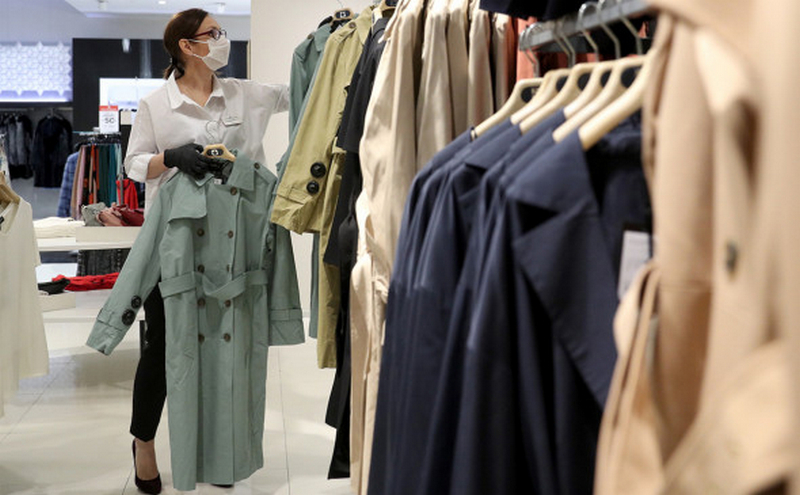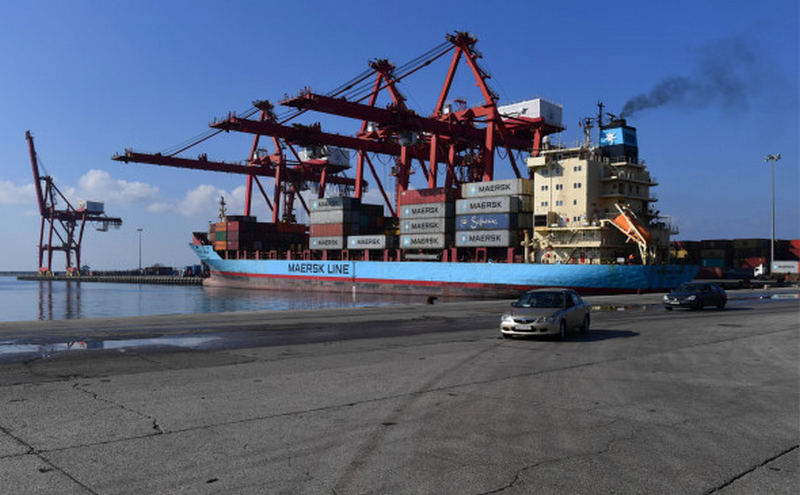
Photo: Mikhail Tereshchenko/TASS
At the same time, they are counting on a recovery in sales after a disastrous 2020.
In the new autumn-winter season, clothing and footwear may, according to retailers’ forecasts, rise in price by at least 10%. The main reasons are the rise in prices for transportation and raw materials. Although the purchase of new collections of the network is not going to reduce
The collections of the new season will add 10-15% in price, Ilya Yaroshenko, President of the Baon retail chain, told RBC. In the fall, the rise in prices for clothing will be subtle, but at the beginning of 2022, retail prices may rise by 18-20%, warns the owner of Gloria Jeans, Vladimir Melnikov. A similar forecast is given by Andrey Pavlov, founder of Zenden Group (the chain of shoe stores Zenden, Thomas Munz and Mascotte).
The rise in prices for clothing and footwear is influenced by the increasing costs of logistics and raw materials, retailers explain. They remind that the cost of sea freight from Asia to Europe has increased several times compared to last year due to the pandemic and disruptions in the work of Chinese ports. Pavlov estimates the rise in transportation costs five to six times. The cost of shipping a container from Asia last year was $ 3,000, now it reaches $ 10,000, and the larger the product or the lower its cost, the more expensive its delivery is, explains Yaroshenko.
|
Since the beginning of the year, cotton has risen in price by 35%, and the cost of all materials related to “chemistry,” that is, those involving petroleum products, has also grown “significantly”, Melnikov lists. In particular, according to him, the price for synthetic fiber – elastane – has risen. The American manufacturer of sportswear of the upper price segment Lululemon bought up the best elastane on the market, and following the shortage that arose from well-known fiber manufacturers, prices for the “no-name companies” were also raised, Melnikov said.
The weakening ruble is also affecting prices, retailers say. In addition, as Pavlov from Zenden Group clarifies, investments in store openings are growing: since last year, prices for building materials, wood and metal have been hitting records: “We will keep prices by reducing the margin, but not indefinitely.”
Not all retailers are ready to raise prices: in Melon Fashion Group (brands Zarina, BeFree, Love Republic, Sela) they remain at the level of 2019. The group, according to its general director Mikhail Urzhumtsev, manages to balance in the regulation of the margin and the expenditure side. Urzhumtsev did not predict prices in 2022: “All our plans make the Lord God smile.”
What happened to prices at the beginning of the year
The increased cost of transportation and raw materials began to affect retail prices as early as the fourth quarter of 2020. On average, according to Pavlov, they grew by 5-10%, but those who had large inventories could partially offset this growth. ” Other retailers also warned about the increase in the cost of products for the summer season.
For the majority of product categories, the growth of retail prices in January-June of this year was at the level of 4-5%, according to the available data of Rosstat. According to official statistics, most of all – by 8%, on average up to 137 rubles. apiece, – the price of children’s panties has risen. The price of a pair of natural leather gloves increased by 7%, to 1.9 thousand rubles. Four product categories included in the monthly monitoring even fell in price in the first half of the year: for example, woolen and semi-woolen scarves – by 5%, on average to 847 rubles. a piece.
What demand retailers expect
This year, apparel and footwear sellers are recovering sales after the failure in 2020, when, according to Fashion Consulting Group estimates, the market in monetary terms decreased by 17%, to 1.9 trillion rubles. Gloria Jeans in January-June 2021 sales increased by 86% compared to the same period in 2020, in the second half of the year the increase will be at the level of 25-30%, Melnikov estimates, without naming absolute values. He admits that sales were down about 20% yoy in July due to heat waves in many regions and a history of QR codes that reduced traffic in malls. Melon Fashion Group’s sales in all countries of presence and channels increased in the first half of the year, according to Urzhumtsev, by 98%.
It makes no sense to compare the current sales with 2020, in comparison with the dock 2019, the first half of the year “sank by 10%,” says Pavlov from Zenden Group. However, he expects that in the second half of the year, sales will return to the same level of 2019, “if there are no negative stories again – the closure of the Suez Canal or lockdowns.”
The market will exceed the indicators of 2020, but it will lag 2-6% from the level of 2019, the CEO of Fashion Consulting Group predicts Anna Lebsak-Kleimans. Pent-up demand and savings in the absence of travel and certain forms of entertainment play a significant role in the recovery, she said. Among the negative factors are the limited purchasing power of the population, a low consumer confidence index and the active development of online trading.
Sellers themselves also speak of low purchasing power, but all retailers interviewed by RBC are increasing their collections. “Based on the results of the first half of the year, we see growth, this lively market needs live collections with trendy items at an affordable price,” explains Urzhumtsev. In the spring of 2020, RBC’s interlocutors remind, many companies either stopped deliveries of new collections, or significantly reduced them, expecting poor sales in the fall due to the pandemic. For example, Zenden cut its purchases by 20% last year, but this year has significantly increased its collection, Pavlov says, without giving exact parameters.
Imports of apparel and footwear
Imports of apparel and footwear in 2020 are expected to decline compared to the previous year, but not dramatically. Over the entire last year, according to the Federal Customs Service, 281.1 thousand tons of clothing (without hats) were imported to Russia, which is 9% less than in 2019. In monetary terms, imports decreased by 6%, to $ 6.9 billion. Supplies of footwear from abroad decreased in 2020 by 7%, to 214.9 thousand tons, in physical terms and by 15%, to $ 3.9 billion , – in monetary terms.
According to the results of the first five months of 2021, imports of clothing (without hats) exceeded 125.5 thousand tons, by $ 2.9 billion, surpassing the indicators of 2020 and 2019: in kind, by 29 and 14%, respectively , in money terms – by 20 and 10%.
The same situation with supplies of footwear from abroad, they reached 93 thousand tons for $ 1.3 billion, which is 12% more than in the first five months of 2020 and 2019 in physical terms (in monetary terms, the increase was 14% compared to the previous year and 1% to the year before).
(Courtesy: RBC)






